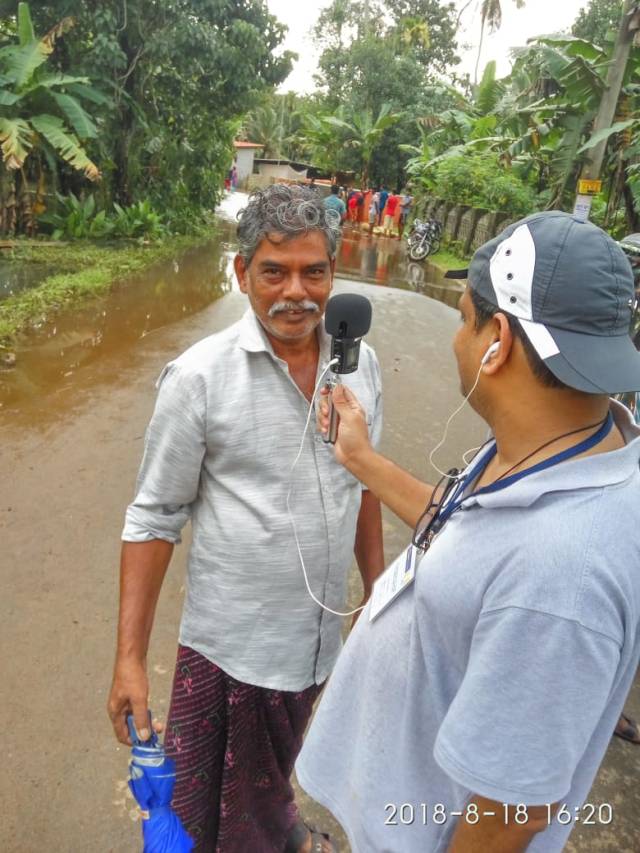
Volunteer interviewing villager in flooded area
In 2019, key informants and citizens were interviewed on their information needs during the Bihar floods in 2017. Both groups expressed similar views of the need of information during a disaster. Very often, during the first two days of the flood, there is no communications since electricity supplies and services are disrupted. For those first two days, it would be good to have battery/solar radio sets in disaster preparedness kits or bags that citizens are recommended to carry.
The majority of the key informants were not aware of radio broadcast on AIR relating to disaster survival, which made it impossible for them to evaluate the value of AIR broadcasts, limiting the usefulness of this study. In general, the key informants see the media as a bridge between the citizens and the rescue network, provided the citizens carry radios with them or have the earphones that are provided for FM listening on mobile phones. Media should not cover disasters in a sensational manner, but in a positive manner, giving information, advice and mental encouragement. Those who had listened to disaster survival content on AIR, appreciated the mental encouragement and disaster preparedness topics.
Similarly, citizens found it hard to recognize the English language title of AIR disaster survival broadcast, ‘First Response’, FR, which was used at the beginning and at the end of the 15-minute program. Naming the program in the local language might benefit reception research in the future. However, one fifth of the sample had listened to FR content, at least a few times a week, usually through a FM station. FR listeners share the same demographic characteristics as the rest of the sample. The most beneficial content for both FR listeners and FR non-listeners was the advice on boiling water or using tablets to clean the water. Listening to music is related to better health after the disaster, so local music should be kept in the disaster radio content.
According to some key informants, local citizens’ disaster preparedness and decision making capabilities need to be improved, since flash floods occur suddenly, sometimes without warning. Broadcast formats need to be thought through carefully. In this research, long interviews by experts were disliked by the listeners; I recommend that broadcasters use experts in shorter radio features such as community service announcements, or in shorter interviews that are restricted to one topic in each interview. Certainly, information and education about water purification and delivery, medical and agricultural services, recovery advice and disaster preparedness can be put into shorter and especially designed information and education community service announcements. We also recommend that more airtime should be given to community-driven content and citizen’s voices.
This research shows that the flood-affected citizens benefit from advice, information and music. Delivering these become problematic during disasters when they are needed most. Media organizations and networks need to prepare a communications plan before the disaster occurs. If citizens do not have radio sets, how will they receive these communication services? Or, would it be best to utilize village communication systems, such as solar-powered loud speakers? Or, if FM frequencies are utilized, will earphones be delivered to the citizens?
Besides preparing a communications plan for the villages, citizens need to be prepared themselves. AIR radio has started to produce preparedness content, and disaster management staff is planning to organize classes to teach swimming. There are many things that could be done for preparedness and disaster mitigation at the household and larger society levels. For example, there are citizens living in temporary huts and farming their land within embankments in Bihar that flood every year. They would need to find a new livelihood to avoid living within the embankment. These are some topics for future research.
